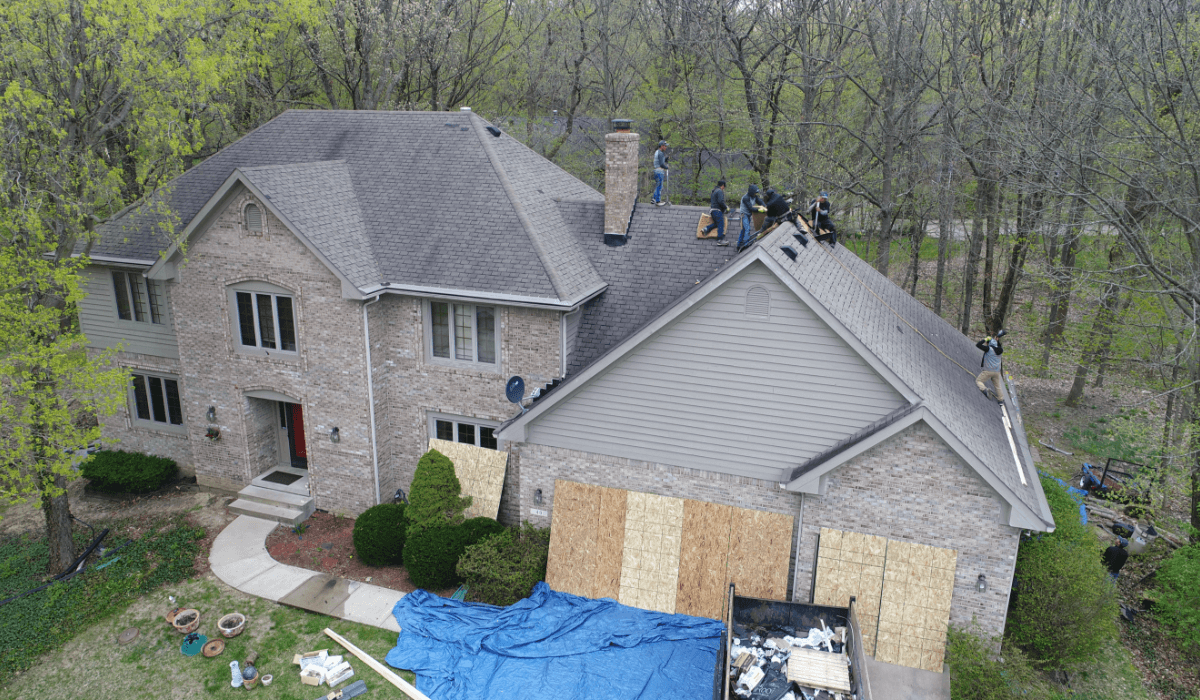A roof replacement is a significant investment that can greatly enhance the safety, functionality, and aesthetics of your home. However, the process can seem daunting if you're unsure of what to expect. In this step-by-step guide, we will walk you through the entire roof replacement process, helping you understand each stage to make informed decisions and ensure a successful roofing project.
Step 1: Assessment and Planning
The first step in any roof replacement project is a thorough assessment of your current roof. A professional roofing contractor will inspect your roof to determine its condition and identify any underlying issues. They will check for signs of damage, leaks, and rot, as well as evaluate the overall structural integrity.
After the assessment, the contractor will discuss their findings with you and provide recommendations for the best course of action. This may include choosing the appropriate roofing materials, color options, and discussing any potential modifications or upgrades you may want to consider.
Step 2: Obtaining Permits and Insurance
Before commencing the roof replacement, it's essential to obtain the necessary permits from your local authorities. A reputable roofing contractor will handle this process for you, ensuring that all necessary paperwork is submitted and approved.
Additionally, review your homeowner's insurance policy to check if it covers roof replacement. If the roof damage is a result of a covered event, your insurance may help with the costs. Be sure to discuss this with your contractor and insurance provider to understand the scope of coverage and claim procedure.
Step 3: Roofing Material Selection
The choice of roofing materials is crucial in determining the longevity and performance of your new roof. Popular options include asphalt shingles, metal roofing, clay tiles, and synthetic materials like slate or rubber. Each material has its unique benefits and cost considerations, so take the time to weigh your options carefully.
A professional roofing contractor will guide you through the selection process, explaining the pros and cons of each material based on your budget, location, and aesthetic preferences.
Step 4: Removal of Old Roofing
Once all the preparations are complete, the roof replacement process begins by removing the old roofing material. The old shingles or tiles are carefully stripped off, and any damaged underlayment is replaced. This step ensures a clean surface and allows for a comprehensive inspection of the roof deck.
Step 5: Roof Deck Inspection and Repair
With the old roofing removed, the contractor will thoroughly inspect the roof deck for any signs of damage or decay. Any weak spots will be reinforced or replaced to ensure a stable foundation for the new roofing material.
Step 6: Installation of New Roofing
With the roof deck in optimal condition, the installation of the new roofing material can begin. Each type of roofing material has its specific installation method, which will be meticulously followed by the skilled roofing team.
Step 7: Flashing and Waterproofing
Proper flashing and waterproofing are essential to prevent water infiltration and leaks around roof edges, chimneys, vents, and other vulnerable areas. Flashing is typically made of metal and is strategically installed to create a water-resistant barrier.
Step 8: Final Inspection and Cleanup
After the installation is complete, a final inspection will be conducted to ensure that the roof replacement adheres to industry standards and your satisfaction. Any necessary touch-ups or adjustments will be made during this phase.
Once the inspection is complete and the roof passes all quality checks, the contractor will clean up the work area, removing any debris and ensuring your property is left in pristine condition.
A roof replacement is a complex process that demands careful planning and execution. By understanding each step involved, you can approach the project with confidence and make well-informed decisions. Remember to work with a reputable roofing contractor to ensure a successful and hassle-free roof replacement, providing your home with a durable and reliable roof for years to come.



